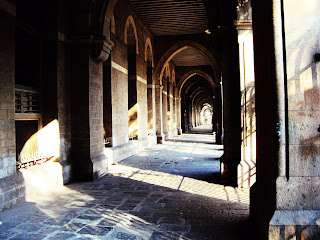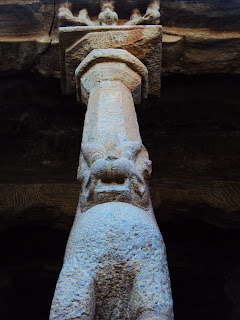The statue stands in the middle of Nariman Point. To its right is the LIC headquarters called 'Yogakshema', The 'Mantralaya' to its right. The Air India building overlooks it from the front. This location comes across in 'Maine Gandhi Ko Nahin Maara', a film on dementia by Anupam Kher. It is a green respite in the overwhelming tall structures in this central business district of Mumbai.
Much has been said and written about this icon. What amazes me is the sheer planning of this building. I just wonder at the vision of the British. Even today, there is no shortage of platforms or suffocation in the main building. The entry and exit points too are spacious enough. it is really a case study of planning, architecture and vision. The BMC headquarters stand right in front of the CST building. In spite of two large structures in the vicinity, one does not feel cluttered.
This unassuming building is on the Dadabhai Naoroji road, one of the prime roads in Mumbai, especially the southern part of the megapolis. The Road sees many commercially vital structures such as the Times of India bldg., CST station, BMC HQ, Flora Fountain (now Hutatma Chowk), Jehangir Art Gallery, Chhatrapati Shivaji museum (formerly Prince of Wales museum), National Gallery of Modern Art (NGMA) etc. The agiary is well known in Parsis and is quite frequented as many of them reside in Colaba.
The name of Flora Fountain was changed to Hutatma Chowk after 105 people lost their lioves in police firing at this spot, when they were agitating for keeping Mumbai within Maharashtra in the late 1950s. The structure is known for being a unique combination of architecture, design and sculpture. It imparts an aesthetic value to the Fort area. The iconic Bombay House, the HQs of the Tatas, stands in the back alley of this main road.
Any photographer cannot resist getting close to the Fountain.
This is the common pathway, which is a part of the Elphinstone College.





























